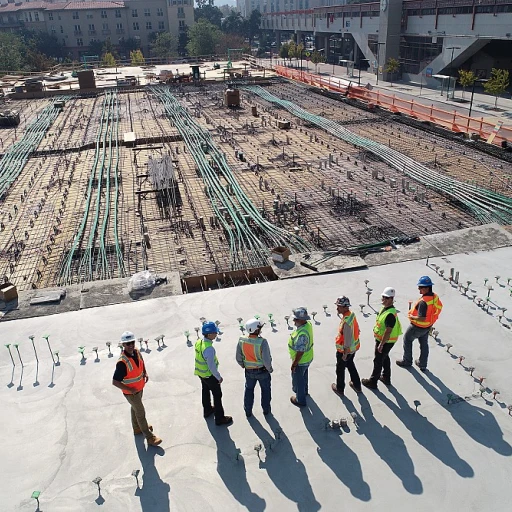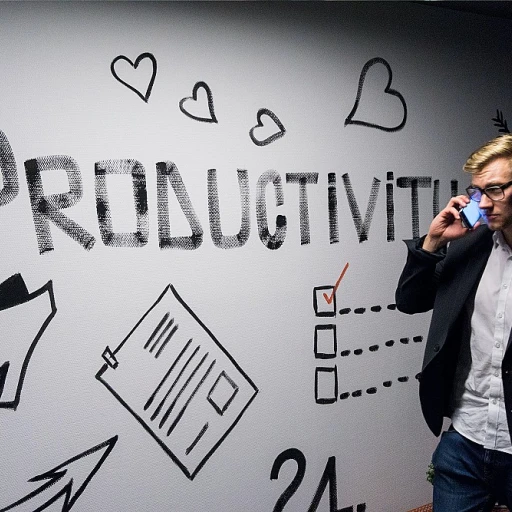Understanding the Importance of Retaining Top Talent
The Power of Retaining Top Talent
In today's competitive business landscape, retaining high-performing employees is not just beneficial—it's essential. The significance of having top talent within an organization cannot be overstated. These individuals contribute disproportionately to innovation, productivity, and overall success. Losing them can lead to significant setbacks, including increased recruitment costs, loss of institutional knowledge, and a negative impact on team morale.
Companies that prioritize the retention of top talent often witness the ripple effects of a motivated and satisfied workforce. By nurturing an environment where high performers feel valued and understood, businesses can not only sustain but also enhance their competitive edge.
One of the first steps in retaining top talent is acknowledging the unique value they bring to the organization. This means understanding their personal and professional goals and aligning these with the company's objectives. It involves a strategic approach that encompasses not just compensation, but also recognition, development opportunities, and work-life balance.
Moreover, integrating a comprehensive retention strategy that includes effective performance management, as discussed further in the subsequent sections, ensures that high-performing employees remain engaged and committed to their roles. For a deeper understanding of the importance of employee retention in maintaining a successful team, explore more
here.
Creating a Positive Work Environment
Fostering a Culture of Positivity and Engagement
Creating a positive work environment is crucial when it comes to retaining high-performing employees. In a competitive job market, employees have plenty of options, and they are likely to gravitate towards workplaces that not only value their contributions but also offer a supportive and engaging atmosphere.
An essential step in building this type of culture is ensuring open and transparent communication at all levels. Leaders who actively listen and respond to employees' needs and concerns tend to build better trust and rapport. This sense of belonging and value boosts morale and keeps top talent motivated and engaged.
Moreover, a positive workplace culture should encompass recognition and appreciation of employees' efforts. Regular acknowledgment, whether through verbal praise, awards, or incentives, can significantly enhance employee engagement and satisfaction. When employees feel appreciated and seen, they are more likely to remain loyal to the organization.
Investing in team-building activities and creating opportunities for social interaction can also make a significant difference. Collaborative events, workshops, or even informal gatherings foster camaraderie and strengthen team bonds. This sense of community not only improves workplace relationships but also encourages employees to stay longer, contributing positively to their workplace.
Taking a proactive approach in addressing any negative aspects of workplace culture is equally important. Implementing policies that address workplace bullying, discrimination, or other issues head-on can prevent them from festering and damaging morale. Creating an environment where employees feel safe and respected is foundational to retaining your best talent.
Cultivating a positive and engaging work environment requires a continuous effort and active involvement from leaders and managers. By prioritizing employee well-being and fostering a culture of positivity, organizations can significantly enhance their employee retention strategies.
For more insights on keeping employees happy and boosting team loyalty, check out this comprehensive guide on
strategies for keeping employees happy.
Offering Development and Growth Opportunities
Opportunities for Growth: A Key to Employee Satisfaction
In today's dynamic work environment, offering growth opportunities and professional development to high-performing employees is crucial for maintaining their engagement and loyalty. As discussed previously, creating a positive work culture can lay the foundation for employee satisfaction. Still, without clear avenues for advancement, even the most positive environment may fail to keep top talent motivated.
A prime strategy is to provide continuous learning opportunities. Encourage your employees to attend workshops, conferences, and seminars that enhance their skills and expertise. Not only does this cultivate a more capable workforce, but it also empowers employees to take charge of their career development.
Furthermore, consider implementing mentorship programs where experienced team members can guide and coach newer or less experienced colleagues. This relationship builds a support network within the organization and offers employees a chance to learn from those who have already navigated similar career paths.
Perhaps one of the most direct forms of growth is providing clear pathways for career advancement within the company. Regularly discuss career goals and potential advancement tracks with your top performers during performance reviews. This will emphasize the organization's commitment to their professional journey and help identify which skills or experiences are necessary for their next career step.
Additionally, fostering a culture that encourages innovation and creativity can greatly benefit employee development. Allowing employees to propose and lead new projects or initiatives can offer invaluable opportunities for them to apply their skills in novel ways, boosting both their confidence and loyalty to the company.
For further insights on enhancing employee satisfaction through growth opportunities, you may want to explore strategies to boost employee loyalty and participation. Ensuring that your high-performing employees feel valued and nurtured in their career progression is an investment that will certainly pay off in retention and organizational success.
Enhancing Performance Management Systems
Retaining high-performing employees is not just about keeping them satisfied and engaged. It's also crucial to ensure that they are recognized and rewarded appropriately for their contributions. An effective performance management system plays a vital role in achieving this.
Performance management starts with setting clear expectations and goals. High-performing employees thrive when they know what is expected of them and how their role contributes to the larger goals of the company. Regular feedback sessions, rather than a single annual review, encourage continuous improvement and adaptation, enabling employees to make necessary adjustments in real time.
Furthermore, recognizing and rewarding top performers is essential. This doesn't always mean financial bonuses or promotions—although those are powerful incentives. Recognition can also be given through awards, increased responsibilities, or opportunities to lead significant company projects. Personalized rewards that align with an employee's preferences will undoubtedly impact their satisfaction and inspire loyalty.
In line with creating a positive work environment, offering growth opportunities, and maintaining flexibility, performance management must be seen as a partnership between management and employees. It should aim to support employees in reaching their full potential while also empowering them to contribute meaningfully to the organization.
By implementing a robust performance management system that emphasizes transparency, recognition, and tailored rewards, companies can significantly enhance their ability to retain their most talented employees. This strategic approach ensures that high performers feel valued and motivated to stay committed to their organization.
Utilizing Flexible Work Arrangements
The Power of Flexibility in Modern Workplaces
In today's fast-paced world, offering flexible work arrangements has become a key strategy in keeping star employees satisfied and committed to their roles. Recognizing that the traditional 9-to-5 in-office model can be restrictive for many, progressive companies are adopting more adaptable work schedules, remote work options, and customized work hours to cater to individual needs.
Flexible work arrangements not only enhance work-life balance but also boost productivity. Employees who are given the autonomy to structure their work around personal commitments often report higher job satisfaction and a stronger connection to their company. This trust-based approach shows employees they are valued, fostering a sense of loyalty and reducing the likelihood of them seeking opportunities elsewhere.
However, to successfully implement flexible work arrangements, organizations must ensure clear communication and robust infrastructure are in place. It involves setting clear expectations, leveraging technology for seamless collaboration, and occasionally reevaluating the flexibility options to meet both business needs and employee preferences.
As we have seen in previous sections, creating a positive work environment and offering growth opportunities are crucial. By integrating flexible work models, you further strengthen your strategy in retaining top talent. In doing so, your organization becomes adaptable not just to individual employee needs but also to future changes in the workplace landscape. It's about crafting a workplace that is as dynamic and responsive as the world we live in today.
Monitoring and Reducing Attrition Rates
Understanding Attrition Rates
Encouraging top performers to stay with your company goes beyond simply creating a positive environment or offering growth opportunities. Monitoring attrition rates plays a crucial role in pinpointing areas where retention strategies may need improvement. By keeping a close eye on these rates, companies can detect early signs of dissatisfaction and take preemptive action to address underlying issues.
Analyzing Exit Interviews
Exit interviews are invaluable tools in understanding why high-performing employees leave. By systematically analyzing feedback from departing employees, companies can identify trends and patterns that contribute to attrition. This insight can help employers make informed decisions on improving workplace conditions and strengthening relationships with current team members.
Regular Check-ins and Feedback
Frequent communication is essential in maintaining employee satisfaction and reducing turnover. Regular check-ins allow managers to address concerns, recognize accomplishments, and adapt strategies to meet the evolving needs of their teams. Providing constructive feedback during these sessions empowers employees, reinforcing their commitment to the company and their role within it.
Building an Employee-Centric Culture
An employee-centric culture prioritizes the well-being and development of its team members, recognizing their contributions and valuing their input. Companies that foster such a culture are more likely to keep their top performers engaged and motivated, dramatically reducing attrition rates. By nurturing a strong, inclusive environment, organizations can cultivate loyalty and longevity among their best talent.
While creating a positive work environment, offering development opportunities, and implementing effective performance management are pivotal aspects of employee retention, understanding and mitigating attrition rates ensures that companies continue to hold on to their most valuable assets.













